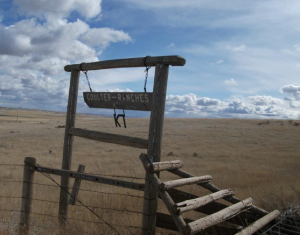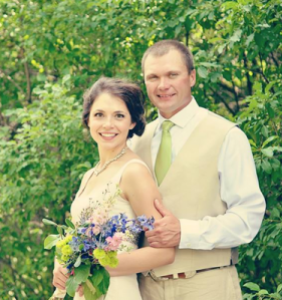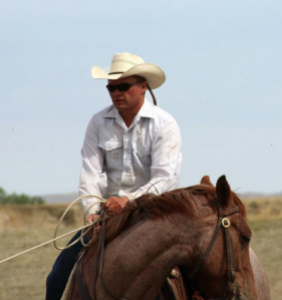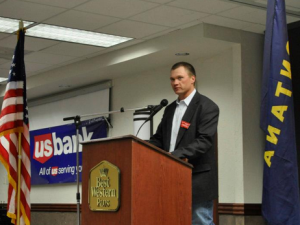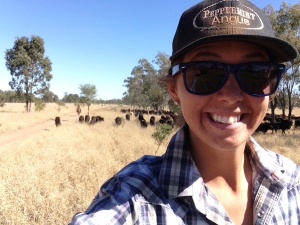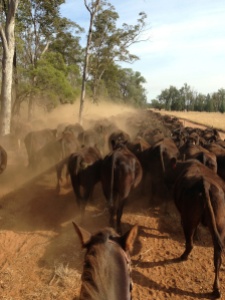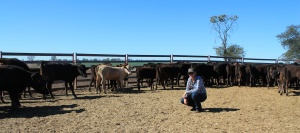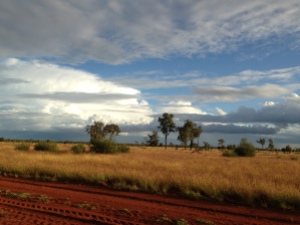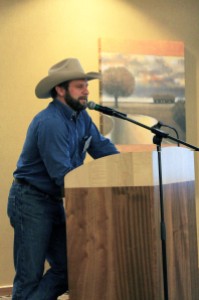Hollyn Cardani isn’t an average college student. Between balancing classes, homework, and extracurricular activities, she is running her own cow herd (with her boyfriend) and trying to make it a successful business in northern Montana. Hollyn has been an instrumental part of the Collegiate Stockgrowers at MSU-Northern club and today we learn more about her in the follow Q&A:

Hollyn Cardani and her horse.
How long has your family been involved in ranching?
Surprisingly, the Cardani ranch has not been around as long as most of the family ranches throughout Montana. My family is originally from the east coast and my father, Steve Cardani, always dreamed of owning a Montana cattle ranch. After high school he moved to Montana, married and had three kids, he worked as contractor, building homes in the Flathead Valley. It wasn’t until the early 90s that he was able to acquire his first batch of black Angus cows and the first time the DS/ brand was ever used. In 1996, my dad bought each of his kids their own cow. Every yearwhen he sold the calves from those cows, my sister, brother and I received our calf check. In the early 2000s, my dad was able to buy a ranch in Teton county between Fairfield and Augusta, Montana. It didn’t take long for the ranch to grow into a small heard of about 130 head of registered black Angus cattle.
What was your favorite part about growing up on the ranch?
My favorite part about growing up on a ranch was being with the animals, the open space and the hard, rewarding work. Before I could walk, I was on a horse, and to this day that it is still my favorite place to be. Growing up on a ranch, you’re always outside from dawn until dusk and I love that way of life. I’m so thankful for all the work we had to do growing up…at the time, it wasn’t always what I wanted to do, but now, I’m very appreciative of the life lessons I have learned from it.
Tell us about your herd.
In 2012 my boyfriend and I bought 15 cows from a ranch that I had worked for south of Chinook. Most of the cows were Red Angus and a few Black Angus. It was one of the toughest decisions we have made financially and trying to go to college while running a cow herd is harder than one might think. Calving has proved to be the toughest part…not because of the cows, but because of classes and homework. We have been very fortunate to be able to lease pasture south of Chinook for the past two summers so as we can run them close to home. We are very lucky to have the support that we do from family and friends because without them we could not have ever made it our first year in the cattle business.
I am very partial to Red Angus cattle…I like their temperament…how they handle the heat and the bugs…their hardiness and their overall beef traits. I am very proud of the type of cows we have, most of the time due to my boyfriends work schedule, I do most of the cattle handling myself. Therefore, it is imperative that the cows are easy to handle.

Riding through the Red Angus herd.
What have been some of the trials you’ve had to overcome?
The most difficult trial of all has been the challenge of not owning any of our own land to run the cows on. Finding pasture to lease was extremely hard our first year and there were times when we thought we would have to give up and sell the cows. But thank God for the support of our friends and family that were always able to provide us with places to fall back on.
What is one thing you wish more people knew about life on the ranch?
I wish the public knew how much money was spent every day on cattle operations…to make sure the cattle are healthy, safe and productive. The cost of fencing supplies, vaccines, feed, leases, fuel, equipment, facilities, vet bills etc, have all increased and made it harder on the family rancher. For us specifically, our costs don’t even come anywhere near to what most farmers and ranchers spend that have anywhere from 100 to 1,000 head of cattle, yet we can hardly keep up.
What does it mean to you to be able to work with your family every day?
I really like working with my family but unfortunately, unlike many family run ranches, I usually only work on my dad’s ranch on certain times of the year. Typically, I’m only there for calving, branding, weaning/shipping, haying and a few times to move or trail cows. But during those times I really enjoy it. He has been so supportive and open minded to all of my new ideas that I bring home from college. Having a father that encourages my Red Angus interest is amazing and knowing that he is proud of his daughter that shares the same love in cattle means more to him than what breed of cattle I have.

Hollyn and her Red Angus cow.
What do you hope the future looks like for you?
I will be graduating from MSU Northern next spring with a degree in Agricultural Operations Technology and a minor in Ag Mechanics. I am hopeful we will be able to find a piece of land to raise and increase our cattle herd where I can put my degree to good use. With the cattle market at the highest its ever been, there’s never been a better time to be in the cattle business and that’s just where I plan on staying.
What would you say to encourage other young ranchers in Montana?
Don’t be afraid to do something different. I thought my dad would be disappointed that I chose the Red Angus breed over Black Angus, but he wasn’t…he embraced it. Experimenting with new ideas is how we learn and grow, you might be pleasantly surprised with the reaction you get.
What’s your favorite beef dish?
A nice tender grilled beef steak!
To participate in a future Q&A or to recommend someone from the Montana ranching community, please contact [email protected].





















